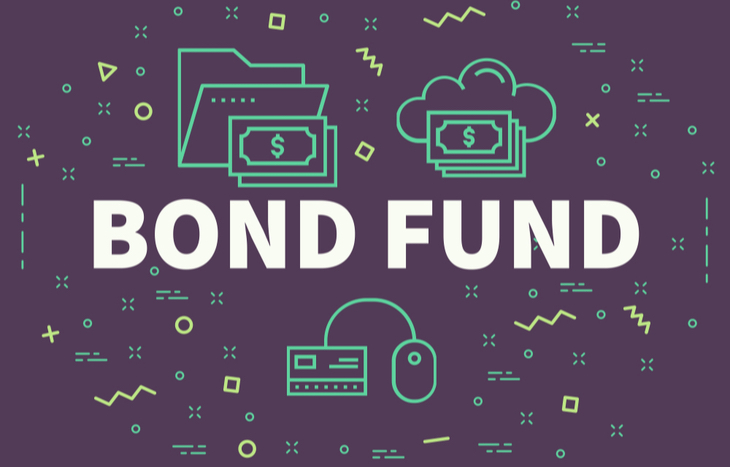A Closer Look at the Best Performing Bond Funds of 2022
After settling to historic lows, bond yields are coming back up. Rising interest rates are also an opportunity for retirees and passive income investors to begin exploring the best performing bond funds as a way to preserve their wealth. But, like any type of ETF or mutual fund, bond funds require a little bit of investigation before you make an investment. Namely, you want to make sure the fund is structured to meet your expectations.
Bond funds offer plenty of stability and the appeal of stable income, but not all bond funds are the same. They vary greatly depending on the type of bonds the fund holds, its objectives and strategies for fund maintenance, and even the changing nature of the bond market. To that end, it’s not always easy to pinpoint the best performing bond funds through objective analysis.
Here’s a closer look at bond funds in 2022, including the most reliable funds based on trailing returns and how they’re expected to perform in the current rising rate environment.

Why Invest in Bond Funds?
The purpose of a bond fund is primarily to generate a steady stream of income through the interest payments generated by bonds. Bond funds offer a simple alternative to building your own bond portfolio. For example, instead of building a bond ladder that ensures accumulated monthly payments, an investor can invest in a bond fund that’ll deliver this same level of payout.
The other instance in which a bond fund is useful is as a portfolio hedge. Investors seeking to bring stability to an equity-focused portfolio might invest in a bond ETF. It’s a way to hedge against volatility, as well as create passive investment income that someone can reinvest in equities.
Bond ETFs vs. Bond Mutual Funds
Like equity funds, bond funds come in both ETF and mutual fund varieties. For most investors, the decision comes down to fund performance vs. expense ratio. Bond funds typically have a lower expense ratio than equity funds, but there’s still a level of active management that’s needed to ensure they perform as-expected.
The type of bonds you’re interested in can also have an effect on the type of fund you choose. Those interested in U.S. Treasuries, large corporate bonds and even municipal bonds will find both ETFs and mutual funds accessible. Those looking for riskier investments like foreign bonds or bonds from subprime issuers will want to trend toward ETFs, since most mutual funds will stick to safer investments.
The Best Performing Bond ETFs
The appeal of many bond ETFs is that it’s easy to enter and exit positions, giving bond investors flexibility to pursue the best yield. That, and there aren’t typically minimum investments for ETFs. Here’s a look at the best performing bond funds in this category:
- Invesco National AMT-Free Municipal Bond ETF (PZA) is continually rebalanced to optimize return and averages roughly 2.3% monthly on municipal bonds.
- iShares Core 1-5 Year USD Bond ETF (ISTB) safeguards against interest rate risk by holding short-term bonds at an extremely low 0.06% expense ratio.
- Pimco Active Bond ETF (BOND) includes corporate and municipal bonds, as well as emerging market bonds, to produce an average yield of 2.53%.
- VanEck Vectors Fallen Angel High Yield Bond ETF (ANGL) is a junk bond ETF that manages an impressive 3% average yield.
- Vanguard Tax-Exempt Bond ETF (VTEB) has an extremely low expense fee of 0.06% and a respectable monthly yield of 1.83%, on average.
- Vanguard Total International Bond ETF (BNDX) focuses on foreign bonds: specifically, non-U.S. denominated investment-grade bonds.
The Top Performing Bond Mutual Funds
Investors looking for a managed bond investment will find it in bond-focused mutual funds. Many of these funds outperform ETF funds on the surface; however, they do come with higher expense ratios that can make these investments a horse apiece. Here are some of the top performers:
- BNY Mellon Bond Market Index Fund (DBIRX) is a short-term focused bond fund that returns 1.85% on average. It requires a minimum $1,000 investment.
- Fidelity Total Bond Fund (FTBFX) tracks both domestic and foreign bonds for broad exposure. This fund carries an expense ratio of 0.45%, but average a return of 2.28%.
- Northern Trust Bond Index (NOBOX) requires $2,500 to invest and has an impressive 2.13% average yield. Its expense ratio sits at 0.15%.
- Schwab U.S. Aggregate Bond Index Fund (SWAGX) has the lowest expense ratio on this list (0.04%) and averages 1.95%. It’s also the youngest fund on the list, est. 2017.
- T. Rowe Price QM U.S. Bond Index Fund (PBDIX) has a minimum investment requirement of $2,500. Investors should expect 1.92% yield and fees of 0.25%.
- Vanguard Total Bond Market Index Fund (VBTLX) requires a minimum investment of $3,000 but has almost no expense ratio (0.05%). It averages 1.95% monthly.
A Smart Way to Maintain Retirement Income
For retirees and investors who rely on bonds for regular income, the performance of the fund matters significantly. To that end, it’s important to carefully select funds that have a trailing history of returns, strong managers at the helm and strategies for adapting to the bond market itself.
Want more tips on how to invest in bond funds with confidence? Discover the best investment newsletters to get the scoop on bond funds and expert picks. You’ll learn not only how to identify the best performing bond funds, but what to expect from them as the bond market continues to take shape in 2022 and beyond.





